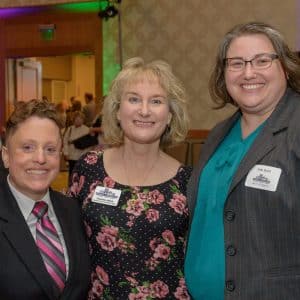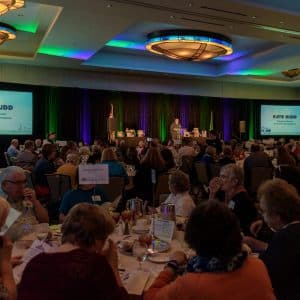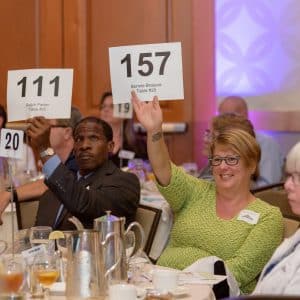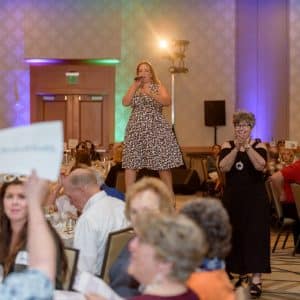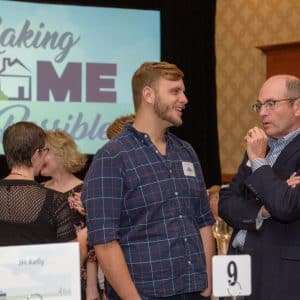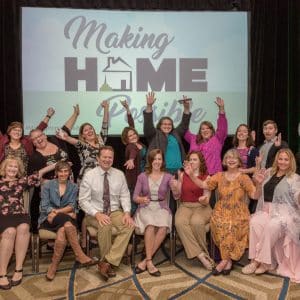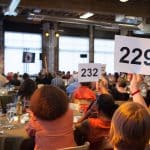Making the Switch to an Active Paddle Raise
At a fundraiser, the goal is first and foremost to raise money for your work. But a key strategy to increase giving and build long-term support includes recognizing the people who are supporting you. Recognition plays into the two primary benefits of giving at events: the social benefit and the ego benefit. People want to be a part of something (social), and they want to be seen giving (ego). The best way to recognize people for their contributions? Arms raised and bid paddles in the air, saying “I’m in. I’m with you.”
Most fundraising events include a direct ask for support—whether you call it a special appeal, a paddle raise, fund-a-need or mission moment. This is your biggest fundraising opportunity the day of your event. This is true at any type of event—galas, luncheons, breakfasts, etc. And in our experience, an active appeal (putting bid paddles in the air) is the best strategy for maximizing the recognition and energy in the room and increasing fundraising.
A lot of organizations who hold breakfast or lunch-time fundraisers think that an active appeal is only suitable for a gala-style event. And instead, they opt for a passive envelope collection. This year, we worked with Council for the Homeless on their Annual Luncheon, and they made the shift from a passive envelope collection to an active appeal. The results were dramatic.
The Annual Luncheon is designed to bring a coalition of advocates together to support Council for the Homeless and activate leaders in the community to prevent and end homelessness in Clark County, WA. So not only was their special appeal their biggest fundraising revenue opportunity at the event, but it was a chance to really celebrate and recognize the advocates in the room.
The development team at Council for the Homeless worked really hard to get pre-committed gifts before the event, and we worked with them to produce a powerful special appeal story featuring one of their clients. These two components, along with power statements and a call to action from their executive director, set up the special appeal perfectly and mobilized an energetic room. When the moment came for the ask, bid paddles flew.
This pivot from a passive appeal collection to an active appeal gave Council for the Homeless the opportunity to not only maximize fundraising but to recognize their supporters.
Understanding what motivates people to give helps us design these crucial moments at fundraising events to have the most impact possible. So when you’re designing your fundraising events, think about how you can help your supporters get the recognition they need to feel good, feel seen and feel like they are a part of the change you’re making in the world.
Photos by Andie Petkus Photography



